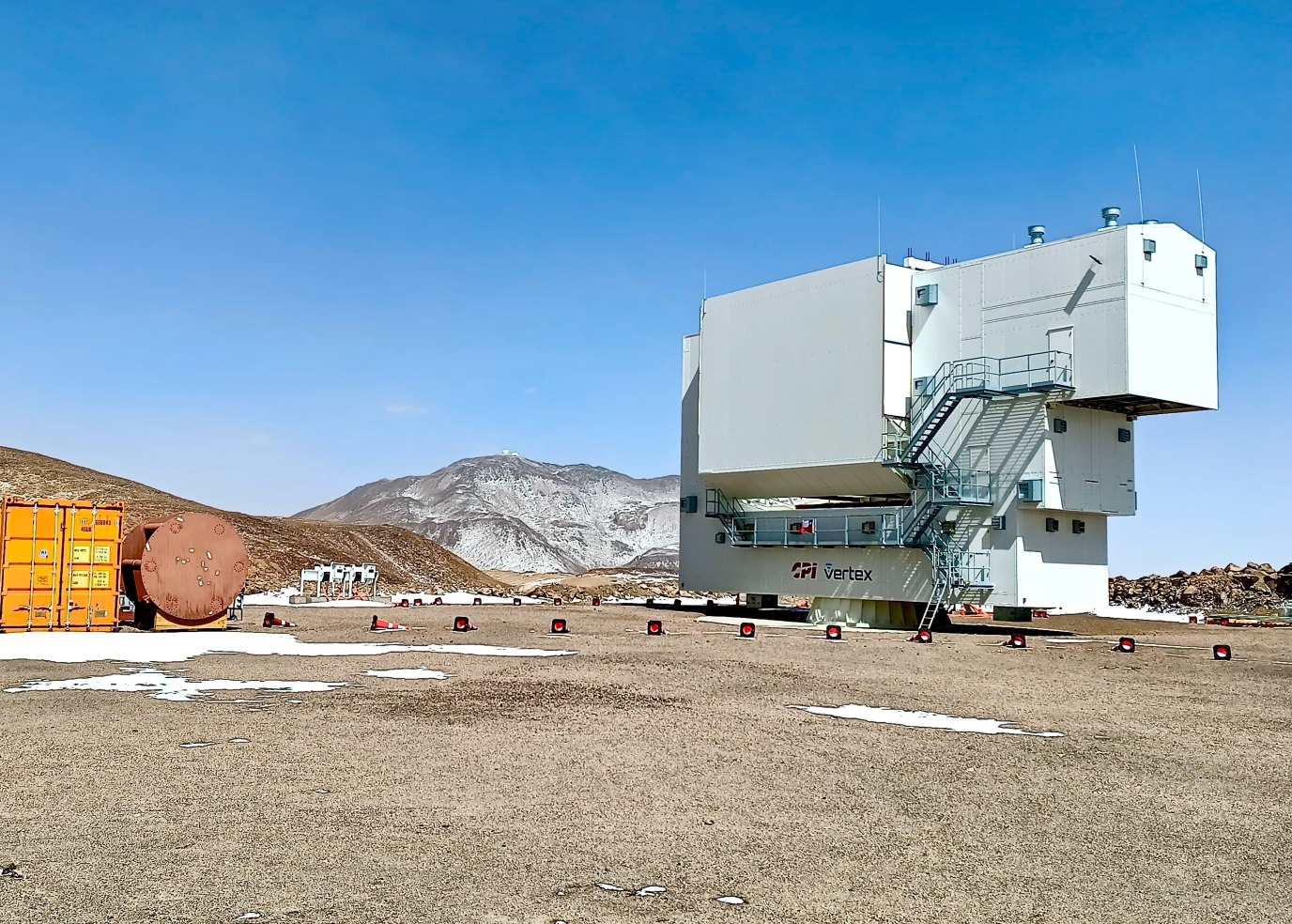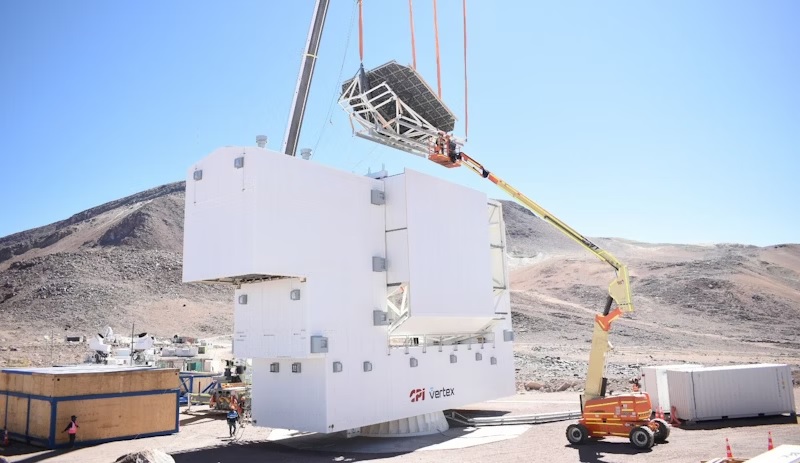Een scherpere blik op de geboorte van het universum

In de Chileense Atacama woestijn gaat een nieuwe telescoop nauwkeuriger dan ooit kijken naar de geboorte van het universum. De Simons Observatory Large Aperture Telescope (grote diameter telescoop) zal 100.000 detectoren gebruiken om de kosmische achtergrondstraling te observeren. Dit is de warmtestraling die kort na de oerknal is uitgezonden. Het opbouwen van de telescoop is in februari afgerond, en nu is er een eerste test-waarneming gedaan, een gebeurtenis die astronomen ‘Eerste licht’ noemen.
FSE Science Newsroom | Tekst René Fransen
Wetenschappers van het Van Swinderen Instituut (VSI) voor Deeltjesfysica en Zwaartekracht en van het Kapteyn Instituut voor sterrenkunde van de RUG zijn betrokken bij het analyseren van de gegevens die dit nieuwe observatorium de komende tien jaar zal produceren.
De meest nauwkeurige metingen van de achtergrondstraling zijn tot nu toe gemaakt door de Europese Planck ruimtetelescoop, tussen 2009 en 2013. Het Simons Observatorium zal naar verwachting ongeveer tien keer gevoeliger zijn.

Nieuwe natuurkunde
De achtergrondstraling toont ons hoe het universum is gevormd, hij bevat aanwijzingen voor de natuurkundige fenomenen die daarbij betrokken zijn geweest. Op het moment dat de straling is ontstaan, kort naar de oerknal, vonden er zeer hoogenergetische processen plaats. De energieën die daarvoor verantwoordelijk waren zijn hoger dan de krachtigste deeltjesversneller die mensen hebben gebouwd. Dit betekent dat de natuurkunde van die processen waaruit de achtergrondstraling is ontstaan nooit eerder is gezien. Kosmologen verwachten daarom dat ze nieuwe natuurkunde zullen vinden, die zichtbaar zal zijn in patronen in de achtergrondstraling.
Daan Meerburg (VSI) is al in een vroeg stadium betrokken geraakt bij dit project, hij is nu een senior lid van het team dat de data gaat analyseren. Het VSI zal een belangrijk aandeel hebben in de zoektocht naar patronen van nieuwe natuurkunde in de gegevens die het Observatorium zal produceren.
Vorming van sterrenstelsels
Het nieuwe Observatorium kan – op een indirecte manier - ook de temperatuur meten van het gas rond sterrenstelsels en clusters van sterrenstelsels. Astrofysicus Luca Di Mascolo van het Kapteyn Instituut is een van de wetenschappers die hiermee de modellen verfijnen waarmee de vorming van sterrenstelsels worden beschreven. Op die manier zal het Observatorium ons begrip van de geschiedenis van het universum groter maken: hoe de structuur ervan is gegroeid en geëvolueerd, en hoe het is geworden wat wij nu zien.
Zie ook de website van het Simons Observatory.
Meer nieuws
-
19 december 2025
Mariano Méndez ontvangt Argentijnse RAÍCES-prijs
-
18 december 2025
Waarom innoveren, en voor wie?
-
17 december 2025
Ben Feringa wint Feynmanprijs
